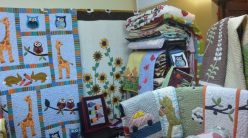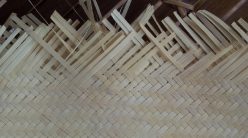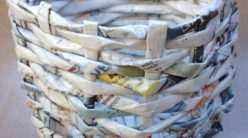A serving hood is one of the household appliances that traditionally functioned as a tool to cover food. When and who made the hood for the first time it is not certain know. The job of making this serving hood is a side job besides farming and is done by women from the Malay tribe. In the past, the making of this serving hood was mostly used for daily purposes as well as for wedding parties. In the beginning, there were only 2 types of serving hoods known to the Malay Landak community, they are the serving hood for the dessert and the bride ‘s serving hood. Base on the times, the form and use of this serving hood has undergone several changes.
The use of this serving hood has also been used as a small decoration and for souvenirs. The serving hood that used as equipment for parties (brides) is made somewhat special compared to those used for everyday purposes. On the outside, this bridal serving hood is wrapped in cloth decorated with floral motifs with tendrils of leaves and flowers known as clouds. In other parts, there are also decorations made of silver plates, sometimes of gold, with flora and fauna motifs such as tumpal (bamboo shoots). The making of a serving hood in the past was closely related to silver / gold craftsmen. To make it more attractive, this serving hood was also paint in yellow, white, red, green, blue and purple with the dominant yellow color because yellow is the color used for kings and nobility.
Apart from being a marriage tool, this serving hood is also used as a souvenir for highly respected guests. The making of this serving hood is in traditional process with the natural main materials such as rattan, layau (a type of bamboo), dadang and seki (a type of forest pandanus), naman / resam (a type of rope used to imply), pineapple fiber, beeswax, mampak (a type of tree sap), jernang (red colored material, derived from rattan), fish scales (sometimes used) and temu kuning (yellow turmeric).
To make it easier to work, needles, scissors, tin, glitter, cloth, pasement, gems, silver, knives, compasses, dyes and thread are used. The first process is cut the bamboe into pieces to the limit of the book, then carefully burned over a fire until the outer skin of the bamboo releases boiling water. The purpose of this burning is to make it easier to peel bamboo. The bamboo is then peeled off the outer shell until a silty layer is found in the inner vessels. The wilt, which was still a vessel, was split open until finally a plane resembling a sheet of paper was found.
The next process is that the silt sheet is clamped by finding the edges to form a circle. The pinched wilt is then soaked in water for 24 hours. Then the layau is dried in the hot sun. After drying, the clamps are removed, then the silt is arranged in such a way for further manufacture.
The rattan material is used to make the hood frame by cleaning the rattan, then dividing it into two parts and then linking the two ends together by pinching the edge of the leg from the serving hood wall. The leaf-shaped dadang and seki were used for the hood. The process of making the leaves is selected which is a bit old, the thorns are removed and then dried in the hot sun. After that the leaves are rolled in such a way and then tied. To tie a rope made of pineapple or it could be from pineapple fiber. Beeswax is used to smooth the cords of pineapple or pineapple fibers before they are used for tying.
–sh





